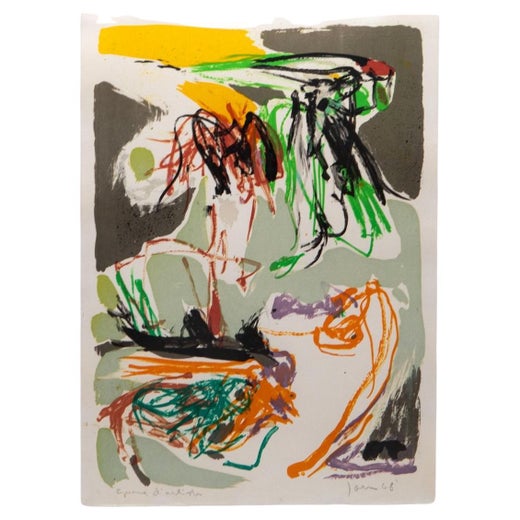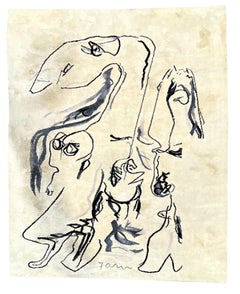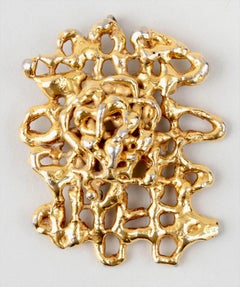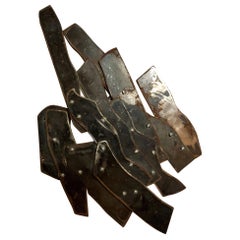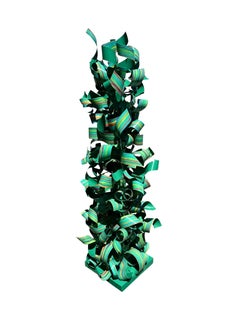Asger JornHuge Scandinavian Abstract Wool Tapestry Art Rug Asger Jorn Cobra Artist Denmark
About the Item
- Creator:Asger Jorn (1914 - 1973, Danish)
- Dimensions:Height: 131.89 in (335 cm)Width: 98.43 in (250 cm)
- Medium:
- Movement & Style:
- Period:
- Condition:Good. Has some age commensurate wear and some toning and staining. could benefit from a cleaning. Please see photos.
- Gallery Location:Surfside, FL
- Reference Number:1stDibs: LU38210377282
Asger Jorn
Asger Jorn was a Danish painter, sculptor, ceramic artist and author. He was the co-founder of the avant-garde movement CoBra, alongside Karel Appel. Jorn was a painter, but also a printmaker and realized lithographs and etchings. From 1937–42, he studied at the Royal Danish Academy of Fine Arts in Copenhagen. His first American solo exhibition was at the Lefebre Gallery in 1962. In 1964, Jorn was awarded a Guggenheim Award, including a generous cash prize, by an international jury assembled by Lawrence Alloway. During his artistic career, Jorn produced over 2,500 paintings, prints, drawings, ceramics, sculptures, artist's books, collages, décollages and collaborative tapestries. Jorn died in Aarhus, Denmark, on 1st May 1973.
You May Also Like
21st Century and Contemporary Abstract Expressionist Abstract Sculptures
Fabric, Textile, Cotton, Thread
2010s Abstract Expressionist Abstract Sculptures
Canvas, Acrylic, Resin
2010s Abstract Expressionist Abstract Sculptures
Textile, Wood, Acrylic
2010s Abstract Expressionist Abstract Sculptures
Porcelain, Textile, Epoxy Resin
2010s Abstract Expressionist Abstract Sculptures
Textile, Wood, Acrylic
2010s Abstract Expressionist Abstract Sculptures
Textile, Wood, Acrylic
2010s Abstract Expressionist Abstract Sculptures
Porcelain, Textile, Epoxy Resin
21st Century and Contemporary Abstract Expressionist Abstract Paintings
Canvas, Glass, Plastic, Paper, Oil, Found Objects
1980s Abstract Expressionist Abstract Sculptures
Copper, Enamel, Wire
21st Century and Contemporary Abstract Expressionist Abstract Paintings
Glass, Plastic, Paper, Found Objects, Cotton, Wood Panel
More From This Seller
View All20th Century Abstract Expressionist More Art
Wool
Mid-20th Century Abstract Expressionist Abstract Sculptures
Gold, Bronze
20th Century Abstract Expressionist Abstract Sculptures
Metal
Early 2000s Abstract Expressionist Abstract Sculptures
Metal, Enamel
1990s Abstract Expressionist Abstract Paintings
Metal
Early 2000s Abstract Expressionist Abstract Paintings
Metal
